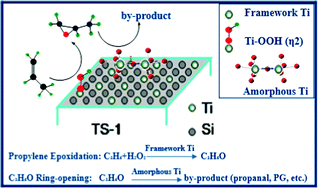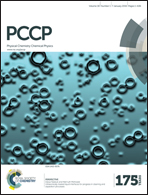The roles of different titanium species in TS-1 zeolite in propylene epoxidation studied by in situ UV Raman spectroscopy†
Abstract
Titanium silicalite (TS-1) zeolites with different titanium species were synthesized and characterized by ultraviolet (UV)-Raman, ultraviolet visible (UV-Vis) diffuse reflectance spectroscopies and by the NH3 temperature programmed desorption (NH3-TPD) method. The roles of different titanium species in TS-1 samples have been investigated by gas chromatography-Raman spectrometry (GC-Raman) during the propylene epoxidation process. For the first time, a positive correlation was found among the concentration of framework Ti species, the amount of active intermediate Ti–OOH (η2) and the conversion of propylene by the in situ GC-Raman technique. The results give evidence that the framework titanium species is the active center and Ti–OOH (η2) is the active intermediate. The presence of extra-framework Ti species is harmful to propylene epoxidation. Furthermore, the amorphous Ti species has a more negative effect on the yield of propylene oxide (PO) than the anatase TiO2. The NH3-TPD results reveal that the amorphous Ti species are more acidic and thus should be mainly responsible for the further conversion of PO.


 Please wait while we load your content...
Please wait while we load your content...